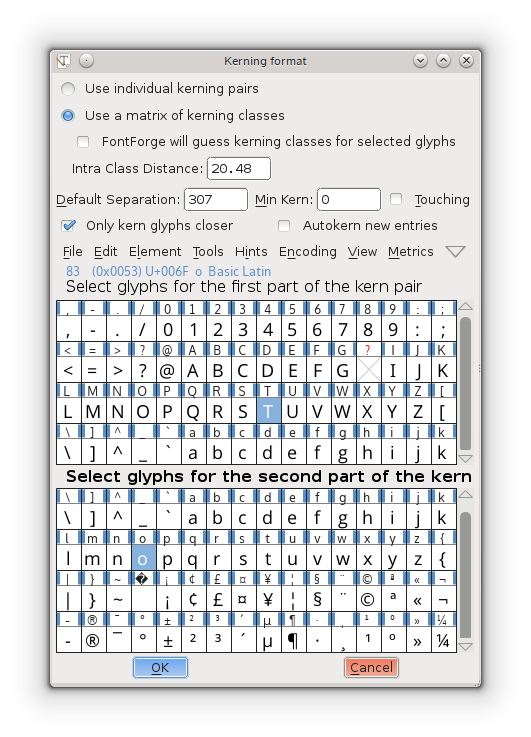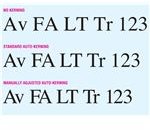

It's about creating what looks right, not necessarily what's mechanically correct. By kerning our letters, we want the eye to see them as evenly spaced in a way that is optically correct. To judge where to add or subtract space, you have to look at the whole headline or set of letters and see what is the most difficult pairing and then work around that. Kerning letters with serifs is a bit trickier because the serifs won't let us get the letters as close together as sans serif. Your goal is to adjust the spaces between the letters to make them appear even.

Open-sided letters or diagonal letters have a kind of invisible extra space within or around them and kerning compensates for that extra space. Here are some common examples of letter combinations that will often need kerning at larger sizes. You want every space between two letters to look as if it holds the same amount of water.

Imagine that the spaces between letters are containers of water. Again, the idea is to create the appearance of even spacing between letters. There are also letters that have open sides and some that have diagonal sides. And the next widest space will be between two straight sided letters. The space around the O curves away, but the straight side doesn't. The next widest space will be between a straight side and a round side. The narrowest space will be between two round-sided letters because the space curves away at the top and bottom, creating the appearance of more space between the letters. To create a consistent rhythm of space and the appearance of equal spaces between letters, here are some general guidelines for kerning. These are tiny, but critical adjustments, and there are no mathematical formulas.
Kerning pairs birdfont manual#
But at larger sizes, those kerning pairs don't work as well so the spaces between letters at display sizes often need manual kerning. There are thousands of carefully calculated spaces between every possible letter combination already built into a typeface by its creator. At text sizes, you don't have to adjust the kerning because the type designer has already done that for you. The goal of kerning is to create a consistent rhythm of space between characters which helps readability. It's different from tracking, which is the adjustment of the spaces between a group of letters. Kerning is the adjustment of the spaces between two specific letters. Unless you're a type designer, you don't have to worry about the first part, making beautiful letters, but as a designer you do have to arrange the letters well. Now both parts of that statement are important to any good design. The task before us is simple to make beautiful letters and to arrange them well. He said something that I still remember, and this is the perfect time to share it with you. In my first calligraphy class, I studied the work of Edward Johnston who is called the father of modern calligraphy.


 0 kommentar(er)
0 kommentar(er)
